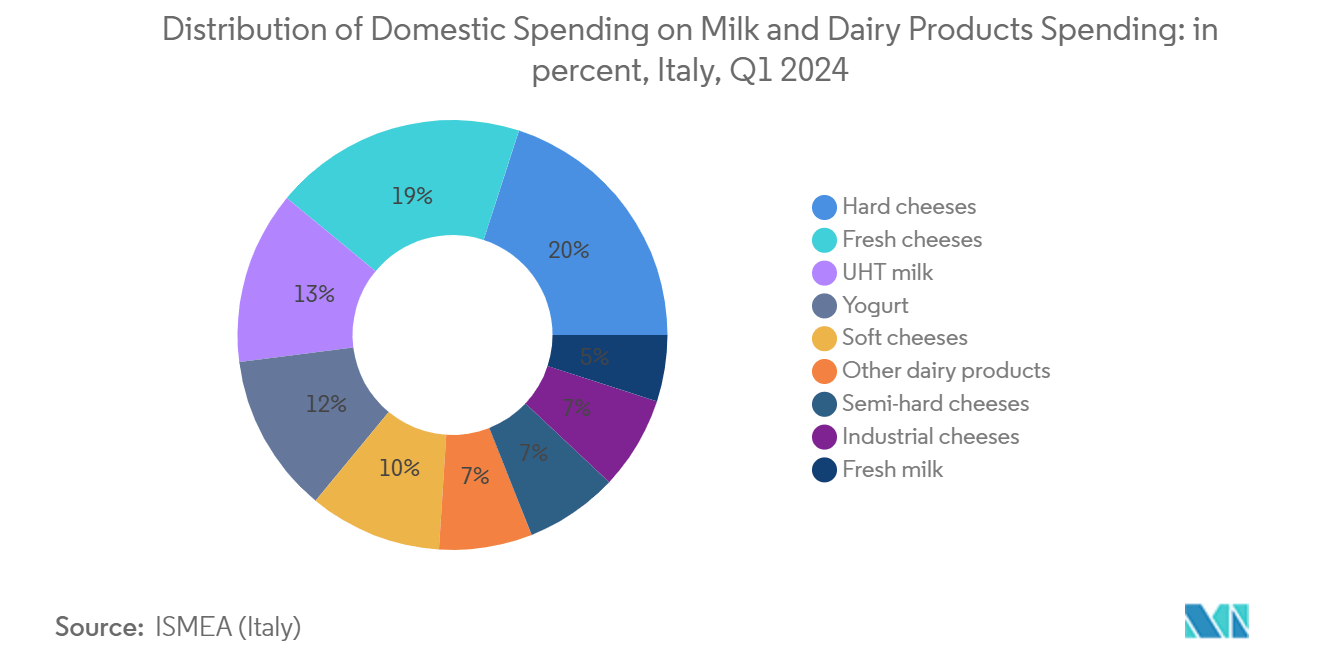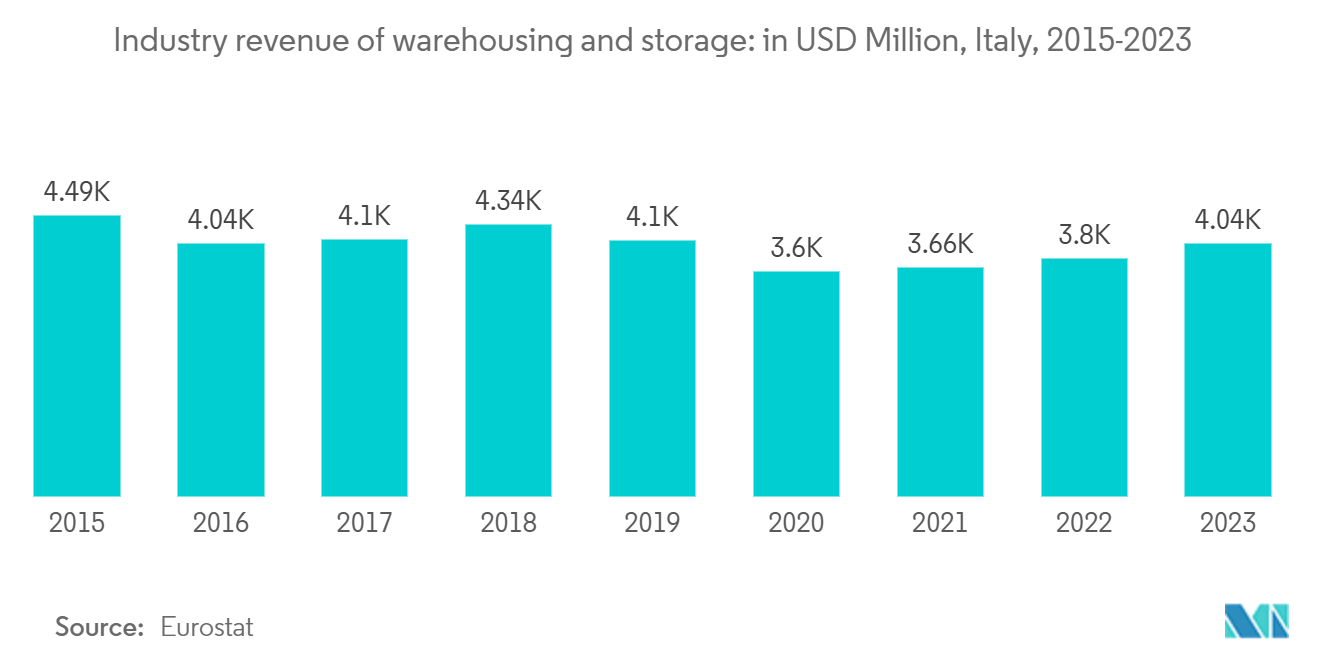Market Trends of Italy Cold Chain Logistics Industry
Increasing Usage of Dairy Products in the Country is Driving the Market
Italy stands as a pivotal player in the global dairy industry, seamlessly blending quality, volume, and tradition in its national production. Cutting-edge milk processing technologies have popularized milk in various forms – fresh, UHT, and LSL – catering to special diets and those with intolerances.
Italy's rich cheese-making heritage is underscored by 37 PDO cheeses and a plethora of local varieties. Here, traditional practices have evolved into industrial processes, coexisting with cheeses crafted through modern techniques. This results in a diverse array of cheeses tailored to meet the discerning tastes of both domestic and international consumers.
Yogurt and fermented milk products boast a vast array of flavors, sizes, and characteristics, making them versatile for various consumption occasions. Beyond traditional offerings, probiotic fermented milk caters to the contemporary health-conscious market. Dominating the Italian food landscape, the dairy sector boasts sales of EUR 14.2 billion (USD 14.96 bn). Notably, 75% of Italy's milk production hails from the northern regions: Lombardia, Emilia Romagna, Veneto, and Piemonte.
Italy produces 11 million tons of milk, converting it into 1 million tons of cheese (with over 440,000 tons being PDO), nearly 3 million tons of pasteurized drinking milk, and 190,000 tons of yogurt and fermented products. The cheese production includes 1.3 million tons of pasteurized milk and 1.6 million tons of UHT milk. Italy's cheese exports, valued at €1.4 billion, amount to nearly 250,000 tons. The leading exported varieties include Mozzarella and other fresh cheeses (36.4%), Grana Padano PDO and Parmigiano Reggiano PDO (25%), followed by Pecorino Romano PDO, Gorgonzola PDO, and Provolone. In a report carried out for the Italian association of farmers and breeders Alleanza Cooperative Agroalimentari, cow’s milk production in Italy is expected to increase by +10/+15% in the next five years, with an average annual variation rate of + 2/+3% which is intended to continue until 2030.
The report also includes estimates of the national production of cow’s milk: Italy will reach theoretical self-sufficiency in the raw material in a few years (today it is 80%). In the last five years, the production of cow’s milk in Italy has increased significantly. Most of the increase in production took place in the northern Italian regions (Lombardy +19%, Emilia Romagna +15%, Veneto +6.0%, Piedmont +15%), but also in some southern regions (Puglia +12%, Sicily and Basilicata) +11%, Calabria +17%). The increasing usage of dairy products in the country is driving the cold chain logistics market.

Expanding Cold Storage Facilities in Italy is Driving the Market
Cold storage facilities are crucial for preserving perishable goods like fruits, vegetables, and seafood. In response to its agricultural industry's needs, Italy, benefiting from a temperate climate, has witnessed a surge in cold storage facilities. Due to advancements in refrigeration and logistics technologies, these facilities have become more efficient, bolstering Italy's agricultural exports. For instance, in September 2024, NewCold, a global frontrunner in advanced food logistics, broke ground on Central and Southern Italy's largest temperature-controlled warehouse. Located in Ferentino, Frosinone, this EUR 70 million (USD 73.77 mn) project is poised to create 150 to 200 jobs and commence operations by 2026. Strategically situated next to Froneri’s Ferentino plant, the facility aims to streamline frozen product storage, offering notable environmental advantages and bolstering Froneri’s expansion. Froneri stands out as the globe's second-largest packaged ice cream entity and a prominent private-label ice cream manufacturer.
The facility's inaugural phase will see it rise to 40 meters (130 feet) with a capacity of 62,000 pallet spaces. Notably, this state-of-the-art warehouse is engineered to consume 50% less energy than its conventional counterparts, harnessing renewable energy and automation. Features include automated vehicle loading/unloading and a fully automated picking system. Expanding its Italian footprint, NewCold's Ferentino warehouse will complement its existing facilities in Piacenza and Borgorose. Once all phases are realized, NewCold's Italian capacity will soar to 200,000 pallet positions. In conclusion, the development of advanced cold storage facilities in Italy not only supports the agricultural sector but also contributes significantly to the economic growth and environmental sustainability.


